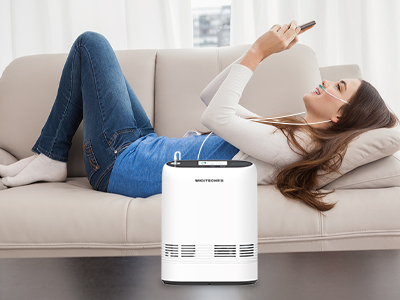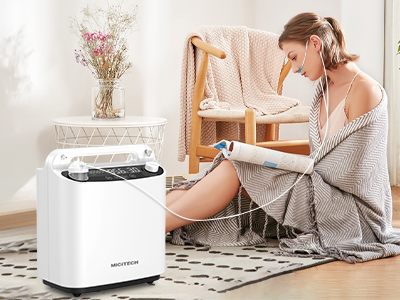25 Mar 2024
Oxygen concentrators can extract oxygen from ambient air and provide it in higher concentrations for inhalation.
Oxygen therapy is crucial for patients with chronic respiratory conditions or those experiencing acute respiratory distress. It helps improve oxygenation levels in the blood and alleviate symptoms such as shortness of breath and fatigue.

Criteria for Receiving Oxygen Concentrator
A. Medical Evaluation
Patients are typically evaluated by healthcare professionals to determine their need for oxygen therapy. This evaluation may include assessing symptoms, oxygen saturation levels, and underlying medical conditions.
B. Oxygen Saturation Levels
Oxygen saturation levels, measured using pulse oximetry, help determine the severity of hypoxemia (low blood oxygen levels) and the need for supplemental oxygen therapy. Patients with oxygen saturation below certain thresholds may be candidates for oxygen concentrator use.
Conditions That May Preclude the Use of Oxygen Concentrator
A. Hypercapnia
Patients with hypercapnia, a condition characterized by elevated carbon dioxide levels in the blood, may not be suitable candidates for oxygen therapy alone. Oxygen therapy in these individuals can exacerbate respiratory failure by suppressing the respiratory drive.
B. Underlying Respiratory Conditions
Certain respiratory conditions, such as severe asthma exacerbations or acute respiratory distress syndrome (ARDS), may require alternative treatment modalities or higher levels of respiratory support beyond what an oxygen concentrator can provide.
Contraindications for Oxygen Therapy
A. Chronic Obstructive Pulmonary Disease (COPD)
In some cases of COPD, particularly in patients with chronic respiratory failure and retained carbon dioxide, oxygen therapy must be carefully titrated to avoid worsening hypercapnia and respiratory acidosis.
B. Neuromuscular Disorders
Individuals with neuromuscular disorders affecting respiratory muscles may have impaired gas exchange and respiratory function. Oxygen therapy may not address the underlying ventilatory impairment in these cases.

Considerations for Special Populations
A. Pediatric Patients
Pediatric patients have unique oxygen requirements and may require specialized oxygen delivery systems tailored to their size and developmental needs. Oxygen concentrators may not always be suitable for pediatric use.
B. Pregnant Women
Pregnant women experiencing respiratory distress may require oxygen therapy to ensure adequate oxygenation for both the mother and the fetus. However, the potential risks and benefits of oxygen therapy during pregnancy must be carefully evaluated.
Alternative Oxygen Delivery Methods
A. Liquid Oxygen Systems
Liquid oxygen systems provide a portable and efficient means of delivering oxygen to patients. They store oxygen in liquid form and can deliver higher flow rates compared to oxygen concentrators.
B. Oxygen Cylinders
Oxygen cylinders contain compressed oxygen gas and are often used as a backup or supplemental oxygen source. They are portable and convenient for patients who require oxygen therapy outside of their homes.
Consultation with Healthcare Provider
A. Individualized Treatment Plans
Healthcare providers work closely with patients to develop individualized treatment plans based on their medical history, symptoms, and oxygenation needs. This may involve a combination of oxygen therapy modalities and other interventions.
B. Monitoring and Follow-Up
Patients receiving oxygen therapy require regular monitoring of their oxygen saturation levels, symptoms, and overall clinical status. Healthcare providers conduct follow-up assessments to adjust treatment as needed and ensure optimal patient outcomes.
Conclusion
A. Importance of Proper Patient Selection
Identifying appropriate candidates for oxygen concentrator therapy is essential to ensure safe and effective treatment. Healthcare providers must carefully assess each patient's medical condition and oxygenation needs to determine the most appropriate oxygen therapy modality.
B. Ensuring Safe and Effective Oxygen Therapy
By considering factors such as underlying medical conditions, oxygen saturation levels, and contraindications, healthcare providers can ensure that patients receive safe and effective oxygen therapy tailored to their individual needs. Collaboration between patients, caregivers, and healthcare professionals is key to optimizing patient outcomes and improving quality of life.
Keywords: oxygen concentrator
Originally published 25 Mar 2024, updated 25 Mar 2024.